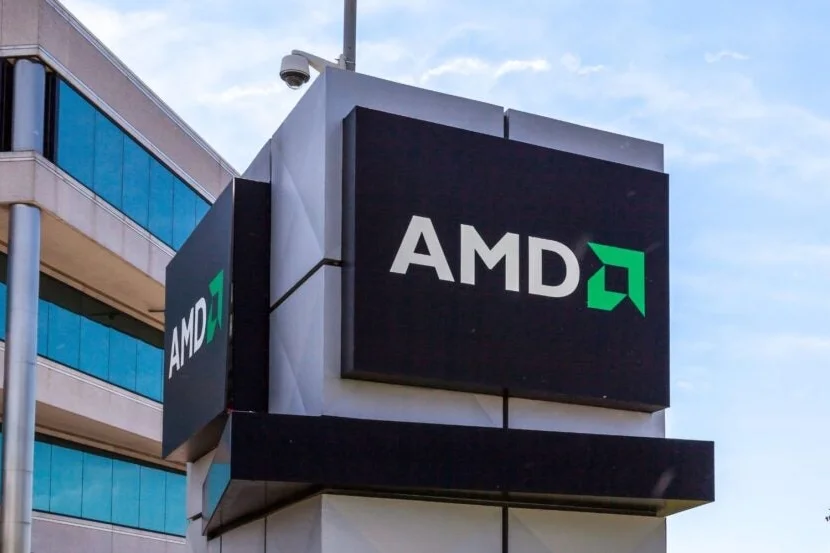Advanced Micro Devices, Inc. (AMD), a leading global semiconductor company, has been a significant player in the technology landscape for decades. Known for its high-performance processors, graphics cards, and FPGAs, AMD has consistently strived to push the boundaries of computing power. This article provides a comprehensive overview of AMD stock, exploring its recent performance, key drivers, challenges, and future prospects.
Company Overview
Initially focusing on logic chips, the company quickly expanded its product portfolio to include microprocessors, graphics processing units (GPUs), and other semiconductor solutions. Today, AMD’s products are widely used in various applications, including personal computers, gaming consoles, data centers, and embedded systems.
Key Products and Technologies
CPUs: AMD’s x86-based processors, such as Ryzen and Epyc, compete directly with Intel’s offerings in the consumer and server markets. These processors are known for their high performance, competitive pricing, and advanced features like integrated graphics.
GPUs: AMD’s Radeon GPUs are popular choices for gaming, professional workstations, and high-performance computing. They are renowned for their excellent price-to-performance ratio and support for cutting-edge technologies like ray tracing and AI acceleration.
FPGAs: Field-Programmable Gate Arrays from AMD’s Xilinx acquisition offer flexibility and customization for a wide range of applications, including 5G infrastructure, automotive, and industrial automation.
Recent Stock Performance
AMD’s stock has experienced a period of volatility in recent times. While the company reported strong financial results in its latest earnings report, particularly in the data center and PC client segments, the stock price declined following the announcement. This decline was attributed to a less-than-enthusiastic outlook for the data center business, raising concerns about AMD’s ability to compete effectively with Nvidia in the AI space.
Despite this recent setback, AMD has demonstrated significant growth in recent years. The company has successfully gained market share from its main competitor, Intel, particularly in the CPU market. This success is driven by the strong performance of AMD’s Ryzen processors, which have been well-received by consumers and businesses alike.
Key Drivers of AMD’s Growth
Strong CPU Performance: AMD’s Ryzen processors have consistently outperformed Intel’s offerings in terms of price-to-performance ratio. This has driven strong demand from consumers and businesses, leading to significant market share gains for the company.
Data Center Growth: The demand for high-performance computing is rapidly increasing, driven by the growth of cloud computing, artificial intelligence, and other data-intensive applications. AMD’s Epyc processors are well-positioned to capitalize on this growth, offering a compelling alternative to Intel Xeon processors in the server market.
Gaming Market: The gaming industry continues to experience robust growth, driving demand for high-performance GPUs. AMD’s Radeon GPUs are a popular choice among gamers, offering excellent performance at competitive prices.
AI Acceleration: With the rise of artificial intelligence, the demand for high-performance computing is expected to skyrocket. AMD is investing heavily in AI technologies, including its Instinct GPUs, which are designed for AI workloads.

Challenges Facing AMD
Competition from Nvidia: Nvidia is a dominant force in the AI chip market, and AMD faces significant competition from the company. Nvidia’s GPUs are currently the preferred choice for many AI workloads, and AMD needs to overcome this challenge to gain a larger share of this lucrative market.
Supply Chain Disruptions: The global semiconductor industry has been impacted by supply chain disruptions in recent years, which can affect AMD’s production and sales.
Economic Uncertainty: Global economic uncertainty can impact consumer spending and business investment, which can negatively impact demand for AMD’s products.
Future Prospects
Despite the challenges, AMD’s long-term prospects remain positive. The company is well-positioned to benefit from several key trends, including the continued growth of cloud computing, the rise of artificial intelligence, and the increasing demand for high-performance computing.
AI Dominance: AMD is investing heavily in AI technologies, including its Instinct GPUs and Xilinx FPGAs, which are well-suited for AI workloads. The company is also developing new AI software and tools to help developers build and deploy AI applications.
Data Center Expansion: The demand for high-performance computing is expected to continue to grow rapidly in the coming years. AMD is well-positioned to capitalize on this growth with its Epyc processors, which offer strong performance and competitive pricing.
Gaming Market Leadership: AMD’s Radeon GPUs remain a popular choice among gamers, and the company is continuously developing new technologies to improve its GPU performance.
Xilinx Integration: The acquisition of Xilinx provides AMD with access to a new market segment and a complementary set of technologies. The company is working to integrate Xilinx’s FPGAs into its product portfolio and develop new solutions that leverage the combined strengths of both companies.
Investor Sentiment and Analyst Ratings
Investor sentiment towards AMD has been mixed in recent times. While the company has reported strong financial results, concerns about its ability to compete with Nvidia in the AI market have weighed on the stock price.
Analyst ratings for AMD are generally positive, with many analysts maintaining “buy” or “overweight” ratings on the stock. However, there is a wide range of price targets among analysts, reflecting the uncertainty surrounding the company’s future prospects.
AMD Stock: A Buy or Sell?
The decision to buy or sell AMD stock is ultimately a personal one. Investors should carefully consider the company’s strengths and weaknesses, as well as the broader macroeconomic environment, before making an investment decision.
Key Factors to Consider
Financial Performance: Investors should closely monitor AMD’s financial performance, including its revenue, earnings, and market share.
Competitive Landscape: It is crucial to understand the competitive landscape and assess AMD’s ability to compete with rivals like Nvidia and Intel.
Technological Innovation: AMD’s ability to innovate and develop new technologies will be crucial for its future success.
Economic Conditions: Global economic conditions can significantly impact demand for AMD’s products.
AMD’s Role in the Semiconductor Industry
AMD plays a vital role in the global semiconductor industry. The company is a key competitor to Intel, and its innovations have helped to drive the industry forward. AMD’s products are used in a wide range of applications, from personal computers to supercomputers, and the company is a major contributor to the digital economy.
Final Thoughts
AMD is a dynamic and innovative company that is well-positioned for growth in the years to come. While the company faces challenges, such as competition from Nvidia, its strong product portfolio, focus on AI, and commitment to innovation position it for long-term success. Investors interested in AMD stock should carefully consider the company’s prospects and conduct thorough research before making an investment decision.
FAQs
What are the key drivers of AMD’s growth?
AMD’s growth is driven by several factors, including the strong performance of its Ryzen CPUs, which have gained significant market share from Intel due to their competitive price-to-performance ratio. The company’s Epyc processors are also gaining traction in the rapidly growing data center market, driven by the increasing demand for high-performance computing. Furthermore, the gaming market’s continued expansion fuels demand for AMD’s high-performance Radeon GPUs. Finally, AMD’s investment in AI technologies positions it to capitalize on the burgeoning AI market.
What are the challenges facing AMD?
AMD faces several challenges, including intense competition from Nvidia, particularly in the AI chip market. Global supply chain disruptions can also impact production, component availability, and overall profitability. Economic downturns can reduce consumer and business spending, negatively impacting demand for AMD’s products. Additionally, rapid technological advancements necessitate significant R&D investments to maintain a competitive edge, while regulatory and geopolitical risks can impact the semiconductor industry and AMD’s operations.
How can investors stay informed about AMD?
Investors can stay informed by following AMD’s Investor Relations website for news releases, presentations, SEC filings, and financial reports. Reading analyst reports from reputable financial institutions, monitoring industry news for trends and competitive developments, and tracking stock price movements, analyst ratings, and market commentary through financial news sources are also crucial.
To read more, Click Here












Leave a Reply